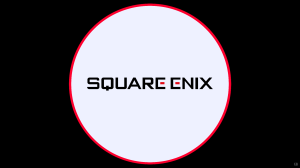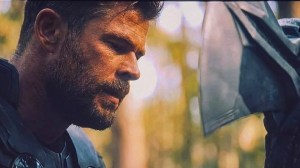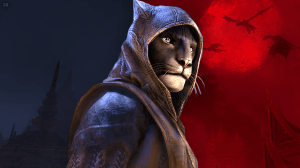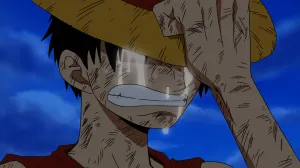
When looking at the long history of the Justice League, from its debut in The Brave and The Bold #28 to its current incarnation, one era stands out as the gold standard: JLA. Co-created by legendary comics writer Grant Morrison and artist Howard Porter, the series was launched in 1997 after the franchise had fallen into a sales slump along with most of DC Comics‘ other titles at the time. While expectations were high, it’s difficult to overstate the reception and impact of the first few years of JLA. Morrison and Porter had captured lightning in a bottle, and the first 41 issues of the series remain the gold standard by which all following incarnations of the team would be judged.
Videos by ComicBook.com
So we arrive at today, more than two decades after JLA began with its unique magic yet to be recaptured, either by later creative teams on the same title or later versions like the flagship Justice League series of the New 52. However, it appears that the newest incarnation of the League has all of the makings of a truly exceptional version, one that captures the magic of JLA and updates it for the modern Rebirth era. Looking at the completed miniseries Justice League: No Justice, which leads into the relaunch of Justice League next week, it’s clear that the spirit of JLA has returned to DC Comics.

The Essential Team
Morrison famously constructed his version of the JLA to resemble a pantheon of Greek Gods. Each character played a specific role, possessed a specific personality, and, most importantly, was bigger than life. As the greatest incarnation of power and possibility in a universe literally filled with gods, the Justice League had to possess enormous stature. That is apparent in the leadership and initial lineup of this new Justice League. The characters that form its core resemble the same cast that an entirely new generation of fans were raised with in the cartoon Justice League. In addition to the classic heroes from the New 52 and previous Rebirth incarnation of the team, both Martian Manhunter and Hawkgirl have joined, and Hal Jordan has been replaced with John Stewart. Comics fans might disagree, but this Justice League is the most iconic version of the team known to superhero fans at large.
The personalities of many team leaders have been re-established in the pages of “No Justice” as well. Superman remains a pillar of moral clarity and resolve, leading through his example as much as his own direction. Batman is equally respected and feared, even by those that would attempt to take him in a fight like Lobo or Deathstroke. Martian Manhunter is a revered leader who manages to bring out the best in those around him, even a supervillain like Starro. He and Wonder Woman are both inspirational in “No Justice.” In the course of four issues, Snyder and his collaborators have revealed versions of these characters that feel every bit as epic as the stories they occupy.

The Biggest Problems
It is a good thing that each member of this new Justice League seems to be the best version of themselves, because the problems they are facing border on being unimaginable. Following the events of Dark Nights: Metal, the Source Wall, a border of impossible power, has been broken. The ramification of this change was made clear in the events of “No Justice” as four ancient titans representing the fundamental forces of universe rose to devour their creation. While the Justice League stayed them from consuming Earth, they also destroyed Entropy after unleashing thousands of new planets and alien races into the universe. Now the Green Lantern Corps. is unable to repair the flaw in the Source Wall, leading to any number of new threats. Even with Entropy dead, it seems there has never been a more chaotic moment to exist in the DC universe.
This scale of challenges reflects the ambitious sagas of JLA perfectly. Once-notable villains like Doctor Destiny and The Key were relegated to single-issue roles primarily used to introduce new characters or give readers a month to breathe. Morrison, Porter, and their collaborators crafted some of the largest and most deadly threats of the 1990s. Even classic foes like the Legion of Doom and Darkseid were forced to team up in a story that spanned time with two of the greatest threats to ever face the League. Mageddon, the final antagonist of Morrison’s run, was so large that literally every person on Earth was given superpowers to join the Justice League and save the day. This is the potential scale of villainy and destruction that Snyder and his collaborators seem prepared to unleash on all of DC Comics.

The Best Solutions
The conclusion of “No Justice” makes it clear that whatever new omnipotent forces or evil collectives may be dreamed up, Earth doesn’t need to fear as long as the Justice League is around. Facing four fundamental forces of the universe and without a plan, this incarnation of the Justice League still saved the day. It wasn’t by punching hard or having an impossibly convenient contingency strategy from Batman either. They invented creative strategies, improvised in surprising ways, and made new allies. When Martian Manhunter convinces Starro to become a hero and help thousands of alien races, it is all of these things captured in a perfect moment. Starro controlling multiple planets with a single feeling, Manhunter using his empathy to aid the villainous Starro, and then Starro ultimately giving his life to be a hero. Perfect.
This is what made JLA a truly exceptional superhero comic as well. It wasn’t just that the heroes were big, or the threats even bigger. It was how they managed to save the day. Every big saga in JLA ended with unexpected heroes rising to the occasion. That’s how it managed to inspire fans story after story, even making them and the entire planet a hero at the end. JLA dreamed bigger than any superhero team series, and it looks like this new version of Justice League is ready to carry that dream forward.








